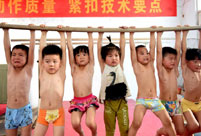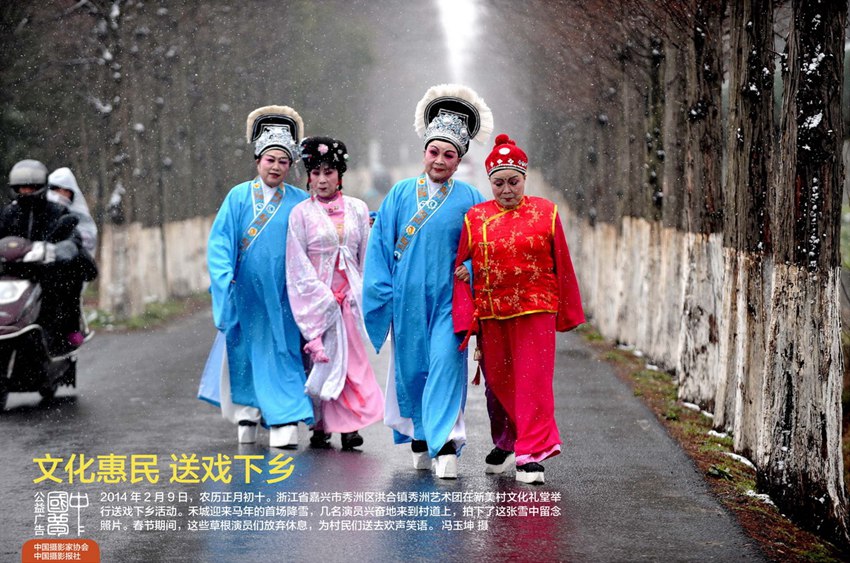 Ceremony volunteers for Youth Olympics make public appearance
Ceremony volunteers for Youth Olympics make public appearance
 A glimpse of female crew of Liaoning aircraft carrier
A glimpse of female crew of Liaoning aircraft carrier
 Stills from "Dad, where are we going?"
Stills from "Dad, where are we going?"
 Legless man's happy life
Legless man's happy life
 Top ten most beautiful islands in China
Top ten most beautiful islands in China
 Aerial view of Hong Kong
Aerial view of Hong Kong
 Happy life in Xinjiang
Happy life in Xinjiang
 2014 China Hainan Int'l Automotive Exhibition kicks off
2014 China Hainan Int'l Automotive Exhibition kicks off
 Collection of 'China Dream' public-spirited ads
Collection of 'China Dream' public-spirited ads
 The silent holy stones
The silent holy stones
BUENOS AIRES, July 17 -- Though far apart and culturally different, China and Argentina, two developing countries, share the same pursuit of prosperity.
After establishing a strategic partnership in 2004, the two countries have seen rapid development of their ties, especially in the fields of trade and economy, which has spurred greater wealth for both.
INCREASED COMMERCE
On May 22, in the Argentine capital and port city of Buenos Aires, 72 brand new passenger train cars were very eye-catching.
Argentine President Cristina Fernandez de Kirchner and Minister of Transport and the Interior Florencio Randazzo unveiled the train cars purchased from China to renovate the capital's main Sarmiento railway line, which links the downtown area with the western outskirts.
As Argentina tries to modernize its inner-city rail system, Chinese-made trains and equipment have won the approval of government decision-makers.
The trains are just one of the many examples of the growing strategic partnership between the two countries in recent years, when bilateral trade rose from 4.107 billion U.S. dollars in 2004 to 16.86 billion dollars in 2013.
Today, China is Argentina's biggest market for agricultural exports, its second-largest trade partner and its third leading investor.
The potential bilateral trade opportunities reflect the complementary nature of the two nations' economies.
Argentina has a well-developed agriculture and abundant natural resources, with an annual soy output of 50 millions tons, which makes it the world's third soy producer.
China, on the other hand, has limited arable land in per capita terms, and has a growing need for cereals. But its manufacturing power can well meet Argentina's demands.
 |
 Moms on their kid’s coming out
Moms on their kid’s coming out Chinese fighters through lens
Chinese fighters through lens
 Children attend gymnastics training in summer
Children attend gymnastics training in summer
 Beautiful sceneries along the special travel route in Xinjiang
Beautiful sceneries along the special travel route in Xinjiang
 Beauty SWAT member in Xinjiang sparks online frenzy
Beauty SWAT member in Xinjiang sparks online frenzy
 Germany beat Argentina 1-0 to win World Cup
Germany beat Argentina 1-0 to win World Cup
 National fitness team members integrate traditional and modern beauty
National fitness team members integrate traditional and modern beauty Collection of 'China Dream' public-spirited ads
Collection of 'China Dream' public-spirited ads  How Chinese men kill the time when their wives practice square dancing?
How Chinese men kill the time when their wives practice square dancing? Top 10 most beautiful islands in China
Top 10 most beautiful islands in China
 Zhou Xun announces engagement to Archie Gao
Zhou Xun announces engagement to Archie Gao
 Photos of the Week
(July 6 - July 12)
Photos of the Week
(July 6 - July 12)
 'Super moon' seen in Beijing
'Super moon' seen in Beijing
 One-legged women with high heel goes viral on Internet
One-legged women with high heel goes viral on Internet China's largest 3D printer builds 2-meter-long boat
China's largest 3D printer builds 2-meter-long boat
Day|Week|Month